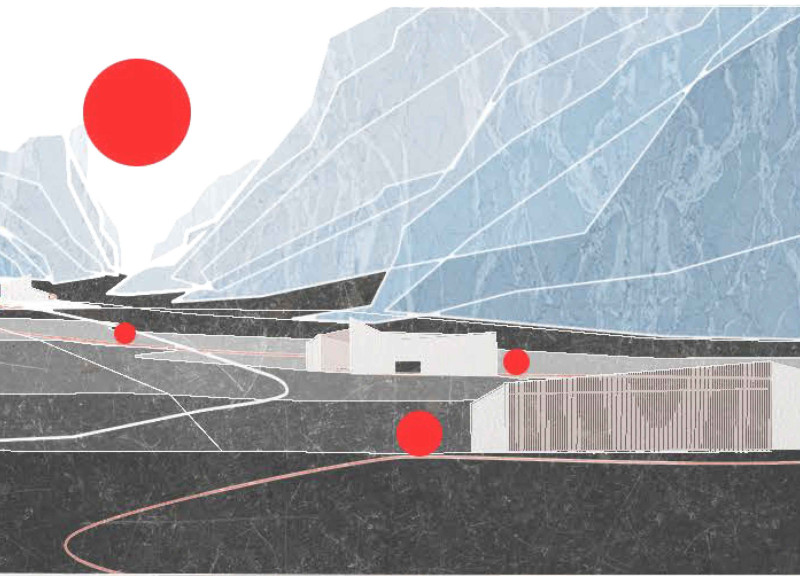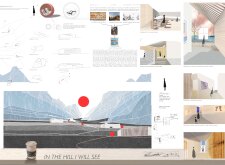5 key facts about this project
The design centers on a concept that highlights movement, interaction, and the importance of representation. Located within a vibrant area, the pavilion accommodates various functions, including exhibition spaces, workshops, and a café. The central design element is the "red ball," which acts as a transportation tool symbolizing the sun. This feature allows visitors to move fluidly between different areas, creating an engaging experience.
Transportation Tool
The red ball plays a crucial role in the design, enabling the movement of visitors throughout the pavilion. Situated at the reception, it serves as a visual and functional focal point. Inside the ball, an axis allows individuals to lie down without rolling, introducing a novel interaction with the space. This thoughtful design detail enhances comfort, encouraging people to explore the pavilion's diverse offerings.
Exhibition Spaces
Distinct exhibition areas are integral to the pavilion, showcasing a range of artworks that span historical and modern times. These spaces include pieces inspired by Egyptian cave paintings and Chinese landscapes, as well as contemporary works from artists like David Hockney. Each exhibition is designed to promote conversation between the viewers and the artworks, reinforcing the connection between personal experiences and the broader context of art history.
Café and Social Hub
The café functions as a social space within the pavilion, allowing visitors to engage with one another as well as the art. A notable element is the large frame that captures images of the distant hills and the setting sun, blending natural scenery with the built environment. This integration encourages viewers to take a moment to reflect, further connecting them to the surrounding landscape and enhancing their overall experience.
Workshops and Participation
The inclusion of workshops invites visitors to actively participate in the creative process. These spaces offer opportunities for individuals to make their interpretations of art and representation, fostering a dialogue between observing and creating. This engagement deepens the exploration of how art and architecture intersect, encouraging personal expression and connection.
The pavilion serves as more than just a display area for art; it is a space for examining themes related to identity and the relationship between individuals and their environment. Each design detail reinforces this ongoing narrative, culminating in an experience where architecture becomes a setting for contemplation and connection to the world.


















































